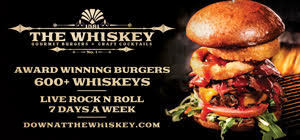 Sometimes a place is best known for one thing. In Barossa Valley, Australia, it’s wine. And if we’re talking about Australia and wine, well then it’s safe to say we’re talking about shiraz. Most wine drinkers understand that shiraz and syrah are one in the same, and there are some interesting myths as to how the differences in the name of this grape came about. But the myths are not as important as why this ancestrally-grown Rhone valley grape found a New World home in the southern Australian region of Barossa.
Sometimes a place is best known for one thing. In Barossa Valley, Australia, it’s wine. And if we’re talking about Australia and wine, well then it’s safe to say we’re talking about shiraz. Most wine drinkers understand that shiraz and syrah are one in the same, and there are some interesting myths as to how the differences in the name of this grape came about. But the myths are not as important as why this ancestrally-grown Rhone valley grape found a New World home in the southern Australian region of Barossa.
Some things are just meant to be. While for years the grape known as syrah has been lending a host of varying qualities to French blends like Cotes-du-Rhone, Hermitage and the ever-popular Chateauneuf-du-Pape, syrah takes on a whole new personality under the New World influence of Australia and South Africa, where it is now known as shiraz. While California is considered New World in terms of wine growth and production, many Californian winemakers choose to use an Old World, or decidedly French approach to producing syrah. And oftentimes, they blend it with other Californian-grown Rhone varietals such as Grenache and mourvédre. Interestingly, in the warmer growing regions of California, syrah is usually bottled in a blend, while syrah from the cooler regions of California and Washington may be bottled as a single varietal. Yet shiraz from the warmer Australian climate exhibits strength enough to stand as a single varietal wine, and is most commonly bottled this way.
But it was not always so. According to legend (or Wikipedia,) Shiraz wasn’t always the most popular grape in the vineyard. James Busby may have brought the clippings-which-would-come-to-be known-as-shiraz over to Australia; however, in the 1970’s, vines containing shiraz and Grenache were mercilessly ripped from the ground in a plot to make room for the increasingly popular white varietals of the time. (Remember the history of rosé and White Zin?) Shiraz didn’t begin on its road to peak popularity until the 1980s and 90s when certain brands made the varietal popular again and a federal tax break was rewarded to those planting new vineyards.
Of course, as in real estate, wine is all about location, location, location. Australian winemakers began replanting, re-growing and producing shiraz, and the public got to experience an exciting, New World way to enjoy this grape. Its versatility is perhaps fully realized here, not only as a single varietal wine, but also as a worthy partner to cabernet or found in the trio of GSM, the blend of Grenache, Shiraz and mourvédre similar to the Rhone blend in Chateauneuf-du-Pape. Something about the terroir of Barossa, which boasts both warm and cool growing areas, compliments this black, thick-skinned grape and results in extracted, lush wines with mocha and black pepper nuances, subtle, integrated tannins and rich complexity.
A nice example of this is the Rocland Duck Duck Goose 2006 shiraz/cabernet sauvignon blend. Shiraz richness is complimented by the equal depth and added structure of cabernet, while 18 months in French and American oak lend this wine its vanilla and spice. Black fruits rule, and the heat of this southern Australian region is exemplified by the 14.9% ABV it boasts.
Pop into Eola Wine Company to sample a glass or bottle ($8/$32), and don’t forget to pair it with the duck flatbread of course. Whether flying solo or flocked in a blend, Barossa’s most popular grape is sure to bring New World meaning to an Old World grape.
{fblike}










